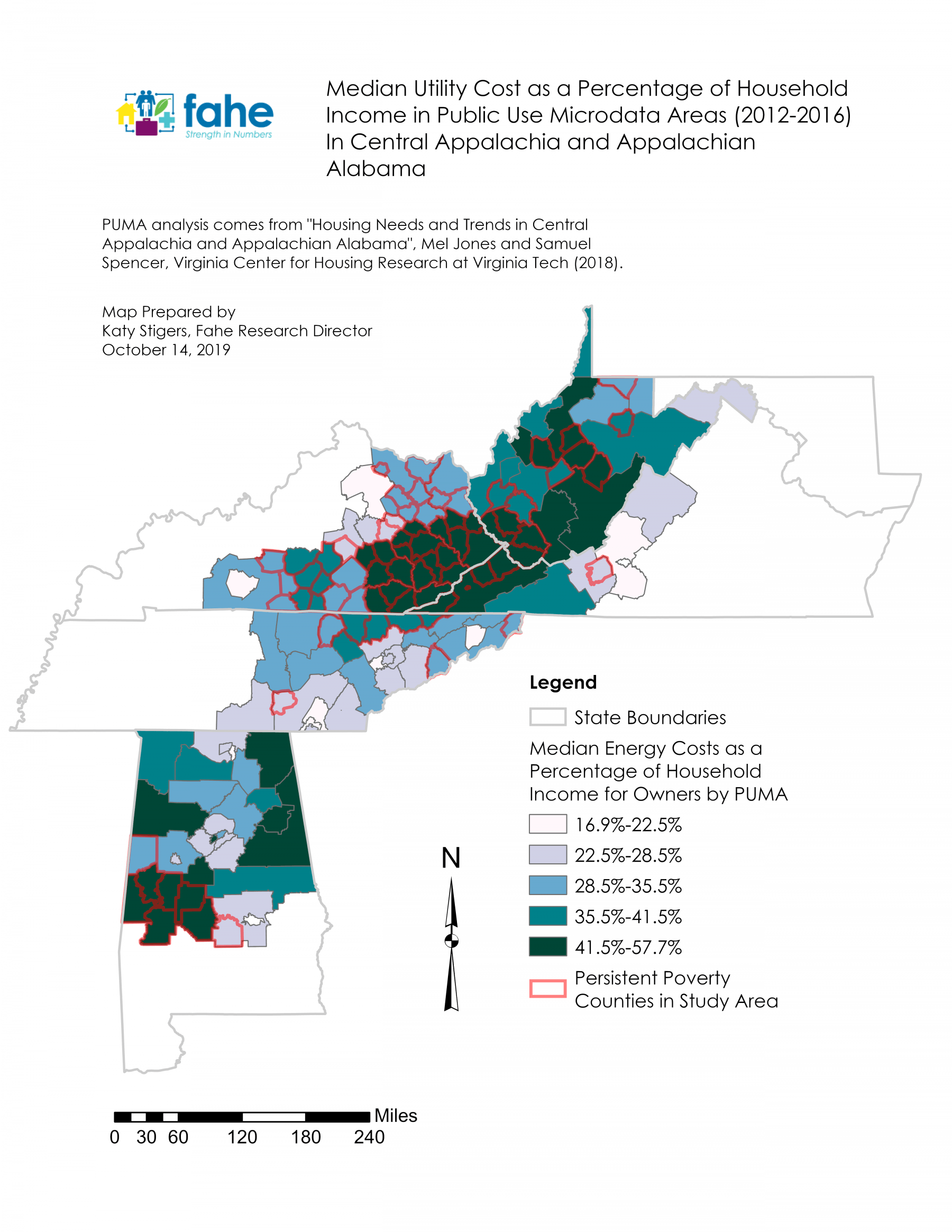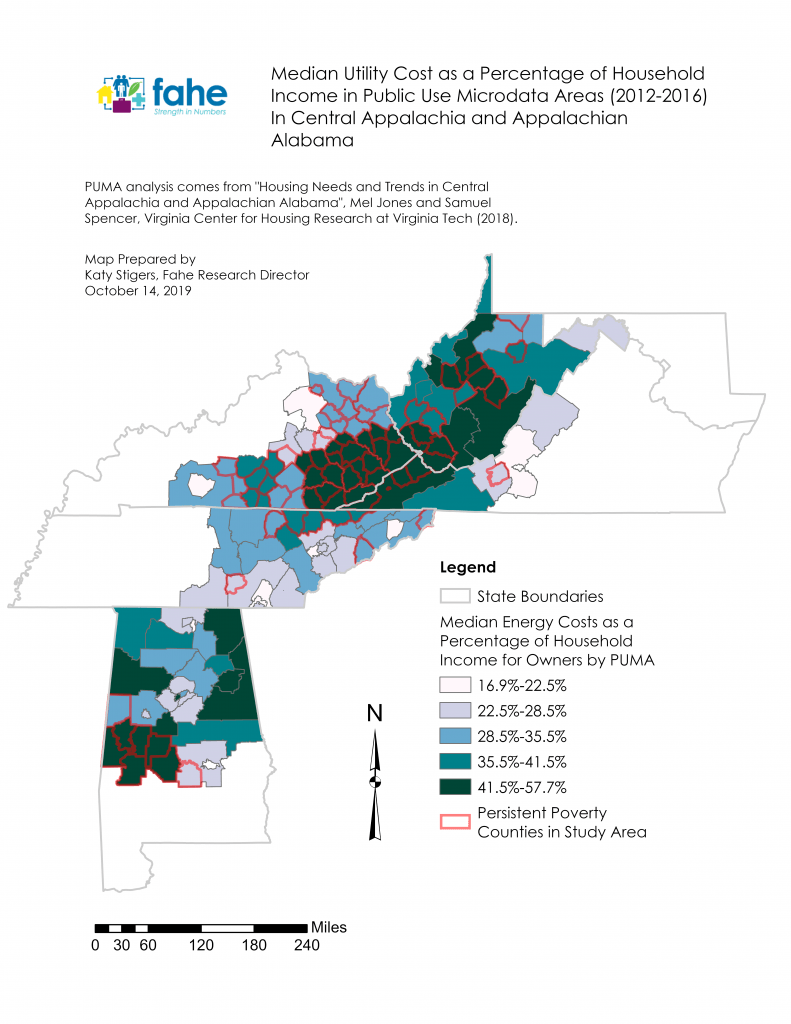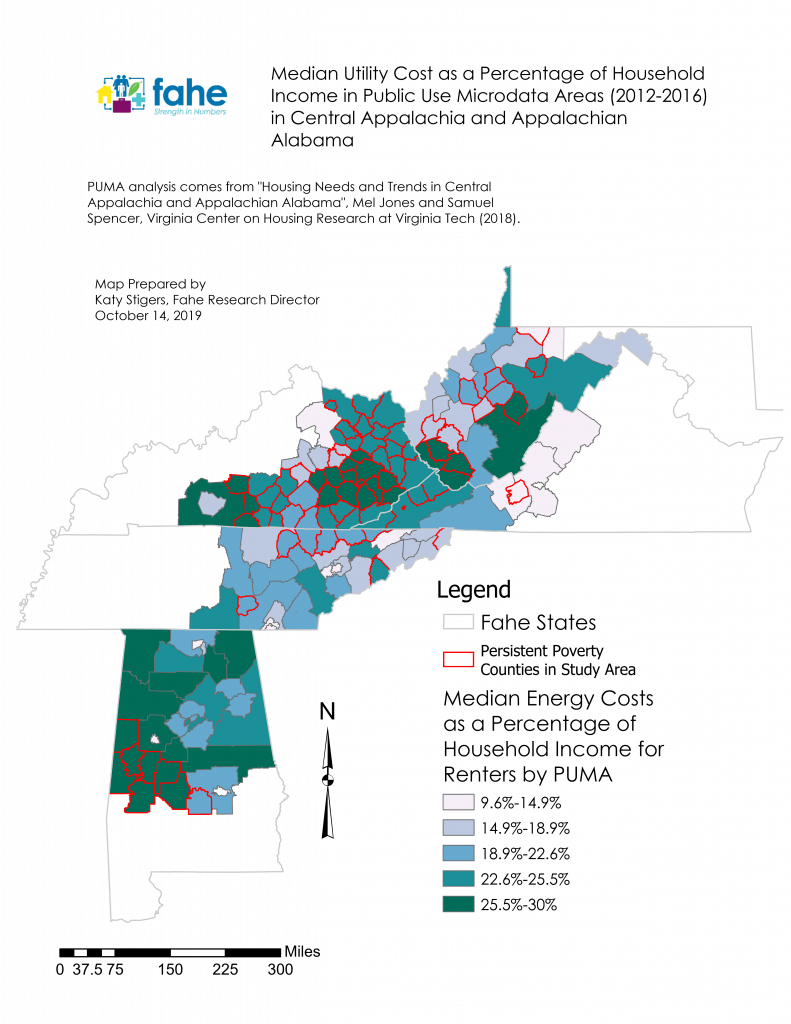
A Snapshot of Energy Cost Burden in Persistent Poverty Counties in Central Appalachia
Substandard housing is one of the numerous challenges that face persistent poverty areas, such as Appalachia. In order to address such needs with proper resources, it’s important to have a better picture of the scale of the issue. While data collection around substandard housing in areas with relatively low population, such as rural Appalachia, is a methodological challenge, one possible proxy is energy cost-burden. Due to the nature of substandard housing – poor insulation, aged or damaged structures, poor windows – high energy costs may indicate the need for repairs, upgrades, or new construction of homes. Housing cost-burden is defined as the percentage of income that goes to all housing costs, including utilities. It is possible to look at how much households are spending on components of their housing costs, such as mortgage or rent, and their utilities using data collected by the Census Bureau.
A research paper commissioned by Fahe and prepared by The Virginia Center for Housing Research at Virginia Tech titled Housing Needs and Trends in Central Appalachia and Appalachian Alabama used the data on energy costs for both home-owners and renters in Fahe’s service areas. By using Public Use Microdata Areas they overcame the challenge of low-population. Then Fahe staff overlaid the persistent poverty counties in our service areas to see whether it suggested the possibility of a relationship.
The above maps illustrate how many persistent poverty counties are in areas where energy cost burden is especially high. These maps illustrate that many counties in our region have median utility costs that result in families spending 40-50% of their monthly income only on the cost of necessities like heating and cooling. We theorize this is another indication of the need for attention to improving the housing stock for families in this region. This information is also included in the new report from the Partners for Rural Transformation draft paper which was released during this week’s OFN conference.
Such data helps inform Fahe and our partners on how to best support local leaders with resources and innovative programs. We have launched services such as the Appalachia HEAT Squad to help alleviate the burden of high energy costs. When AHS staff help improve homes by making energy efficient repairs or upgrades and provide education on best practices, they lower cost burden and make important strides toward improve the health and safety of residents. At the core of Fahe’s affordable housing efforts is to ensure our communities have access to the opportunity—a well-maintained home both improves the quality of life for a family and builds a long term asset.
As we move forward with more data collection, Fahe will be exploring new ways to collect, analyze, and distribute data in order to better inform our efforts to eliminate persistent poverty in the region.


